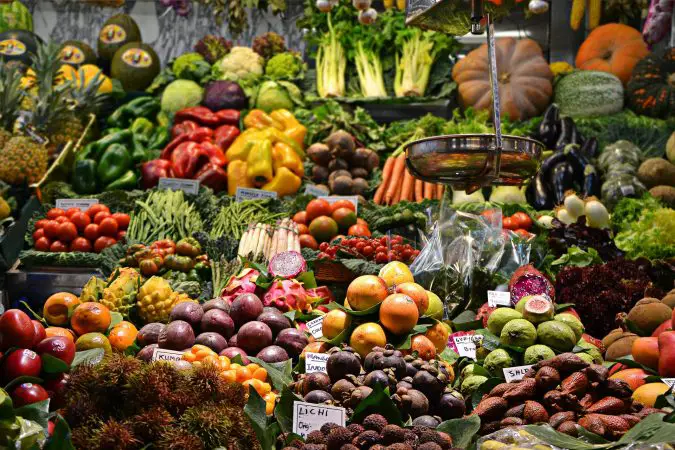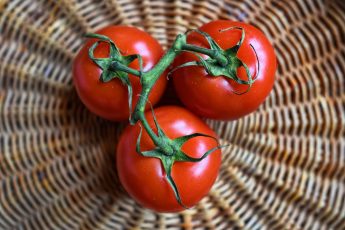Iron is an essential mineral to have so that you don’t develop blood conditions such as anemia. That is because you don’t have enough red blood cells, which can negatively affect your blood oxygen levels.
That is why you need to eat foods that have plenty of iron, such as leafy greens, lentils, and beef. That is essential if you are iron deficient.
However, if you have too much iron, that is not good for you either, and many people have a buildup of iron. Too much iron in your body can be pretty toxic and overload your pancreas, liver, and heart. A condition that causes your body to absorb too much iron is known as hemochromatosis.
If you tend to absorb too much iron, you will want to eat foods lower in iron. That does not mean avoiding iron-rich foods altogether. You still need those foods.
Let’s get started
Low Iron Vegetables List
Even though a few foods, in general, are iron-free, there are no vegetables that are completely free of the mineral. Fortunately, there is a list of low-iron vegetables, which can help those who absorb too much iron stay healthy.
Let’s go over a few of those now.
Find out more about vegetables and fruits HERE
Tomatoes
Tomatoes are technically fruits, but the association with them as vegetables has been there since day one, considering they blend well with other vegetables. Therefore, you prepare tomatoes the same way you prepare other vegetables too. Another thing about tomatoes is that they are very low on iron.
Therefore, if someone has a condition such as hemochromatosis, this food is safe to eat in larger quantities. Another great thing about tomatoes is that they have plenty of other essential properties, such as lycopene which helps to reduce cancer and cardiovascular disease.
Additionally, tomatoes are high in potassium, Vitamin C, K, and folate.
You would think of tomatoes as red, but they also come in different colors, such as green, purple, and yellow, and they can come in different shapes. Another thing about tomatoes is that they are rich in fiber, which is also why it is an excellent food to add to the list.
Avocados
Another fruit disguised as a vegetable is the avocado, which is extremely low in iron. However, let’s also not forget another thing about avocados: they are also perfect for you and taste fantastic.
The superfood is low in iron but high in potassium, fiber, and monounsaturated fatty acids, which is excellent for your cardiovascular health, hormones, and brain function. Additionally, avocados can help lower triglyceride levels as well as the bad cholesterol known as LDL.
One of the most common breakfast ideas is avocado on toast, and even though that is a breakfast associated with millennials, any generation will love that breakfast. You can prepare avocado in many ways, and it is a common component for sushi and smoothies.
Carrots
Carrots are a root vegetable that is extremely low in iron but also very high in fiber. Additionally, it contains plenty of Vitamin A and beta-carotene, which is essential to improving your eye health.
These vitamins also help to lower the risk of ailments such as diabetes. Another thing about carrots is that they also contain Vitamin K and calcium, essential for your bone health. You will also have stronger teeth if your habit is eating carrots almost daily if you can.
Cooked carrots are also perfect for you, and people tend to prefer the cooked vegetable. However, cooked carrots taste delicious because they contain more sugar, as the cooking brings out more sugar in carrots. So if you have blood sugar ailments, you want to keep that in mind and limit your intake of cooked carrots. Raw carrots, however, don’t have this issue.
Zucchini

Zucchini is another fruit that masquerades as a vegetable. Because of that, the zucchini makes it to this list. Not only is the zucchini low in iron, but it is low in calories and fat.
In addition, zucchinis are high in fiber and antioxidants and contain other vitamins and minerals that help improve your eye health, improve cardiovascular health, and reduce blood sugar levels. Additionally, zucchini helps to improve your digestion.
There are plenty of ways to prepare zucchini, and one of the most common methods to prepare it is by barbequing it. However, you can add a drizzle of olive oil as well. Olives contain higher iron levels, but you can keep them as low as possible by adding a small amount of the oil when you prepare your zucchini dish.
Iceberg Lettuce
You may think that iceberg lettuce has very little nutritional value, and when I say that this vegetable has almost no iron, that would not surprise you. However, iceberg lettuce has some essential nutrients such as potassium, folate, calcium, and Vitamin C.
Unfortunately, it has very little fiber, so it does not get the best rap for healthy vegetables. However, remember that this vegetable has a very high water content, and you need plenty of water daily to stay hydrated.
Conclusion
If you are looking for vegetables that are low in iron because you have a condition such as a hemochromatosis which causes you to absorb too much iron, there are several that you will want to keep in your diet.
However, that does not mean it is a good idea to ditch iron-rich foods completely either. Only your doctor and dietician can advise you on what to eat. However, vegetables low in iron are good to snack on if you tend to get hungry at odd times of the day.
Vegetables are ideal for snacks, and if they have low iron content, entirely that makes them that much better for you. Want to know more about gardening? Check out our website.

